Cao Bang is a land with a rich history, culture, and revolutionary tradition. Along with language, writing, cultural festivals, and customs, traditional ethnic costumes are a sign of recognition and a clear expression of national identity, creating richness, diversity, and creating the characteristics of ethnic groups in the province.
Unique traditional costumes of ethnic minorities
It is a mountainous, border province with a population of 530,341 people, of which ethnic minorities account for 95%: Tay ethnic group accounts for 40.83%, Nung 29.81%, Mong 11.65%, Dao 10.36%, San Chi 1.49%, Lo Lo 0.54% and other ethnic groups 0.2%. The traditional costumes of each ethnic group differ in style, type, color and decorative patterns.
First of all, we must mention the simplicity, elegance but extremely sophisticated of the Tay ethnic costume. Regarding men's clothing, in the past, Tay men wore long dresses that reached just above the knee, with a round neck, loose enough to fit their body, sleeves reaching to the wrist, buttoned at the right armpit; inside was a blue or dark colored blouse, indigo pants with wide legs reaching to the heel, tied with a drawstring at the waist; in cold weather, they wore a blouse to keep warm. Over the years, Tay men gradually abandoned the headscarf, cloth shoes and other rudimentary shoes were also replaced with ba ta shoes, western shoes... Women's clothing is also not as elaborate as some other ethnic groups like the character of Tay women, sincere, calm and profound. The indigo dress is long with slits, the flap of the dress flows down to the knees, the sleeves and the body of the dress fit tightly, the high round collar is fastened with a brass button at the right armpit. The indigo pants are wide-legged and fit well, with a drawstring when worn. The indigo strip is tied around the waist and wrapped around the waist, forming two strips that hang down behind. The slits on both sides of the hips reveal the white part of the white blouse worn underneath, adding to the graceful charm. On the head is a straight bun, with a square scarf shaped like a crow's beak.
The Nung ethnic group has many branches, so their costumes are quite rich and diverse, each branch has its own characteristics. The Nung ethnic group's costumes are all cut and sewn from indigo-dyed black fabric, with simple designs. The costumes of men in all branches of the Nung are similar, with short shirts with open chests, buttons, wide sleeves, and long pants reaching the heels. Women's costumes are diverse, the Nung An and Nung Inh are made of black indigo fabric, including a scarf, shirt, belt, apron, and pants. The shirt is longer than the buttocks, has 4 panels, 4 buttons, a round neck with white fabric trim, two sides of the shirt are split with white fabric trim with black stripes and a piece of indigo fabric trim. The belt is made from a piece of indigo fabric about 1 meter long, both ends are embroidered and decorated with colored thread. The apron is rectangular, made of indigo fabric, with a tie at both ends, when used, they tie it over the belt to protect the clothes from dirt when working.
The Mong ethnic group in Cao Bang has 3 branches: White Mong (Mong Dau), Flower Mong (Mong Lenh), Black Mong (Mong Du). The residential areas of the Mong people are concentrated in the districts: Bao Lac, Bao Lam, Ha Quang, Nguyen Binh. The male costumes of all 3 Mong groups have similarities, a set of clothes includes a scarf, shirt, and pants. Men wear scarves made of indigo fabric, wrapped like a turban. The shirt is a four-panel shirt with four pockets, two upper pockets, two lower pockets, a chest slit, fabric buttons attached to the chest band. The standing collar is bordered with colored thread. The pants are cut like a lame leg, wide legs, low crotch, when worn, the waistband is flipped diagonally on both sides and tucked inside and then tied tightly on the outside. The costumes of Mong women basically include a head scarf, shirt, bib, skirt, belt, apron, and leggings, however, there are still clear differences shown through the decorative motifs and color combinations of each group. The Mong people have silver jewelry such as necklaces, bracelets, earrings... They believe that jewelry will make people more beautiful and radiant when used and also show the economic ability of each family. When getting married, Mong girls are often given a necklace by their parents as a souvenir that must be kept for life, not sold or given to anyone.
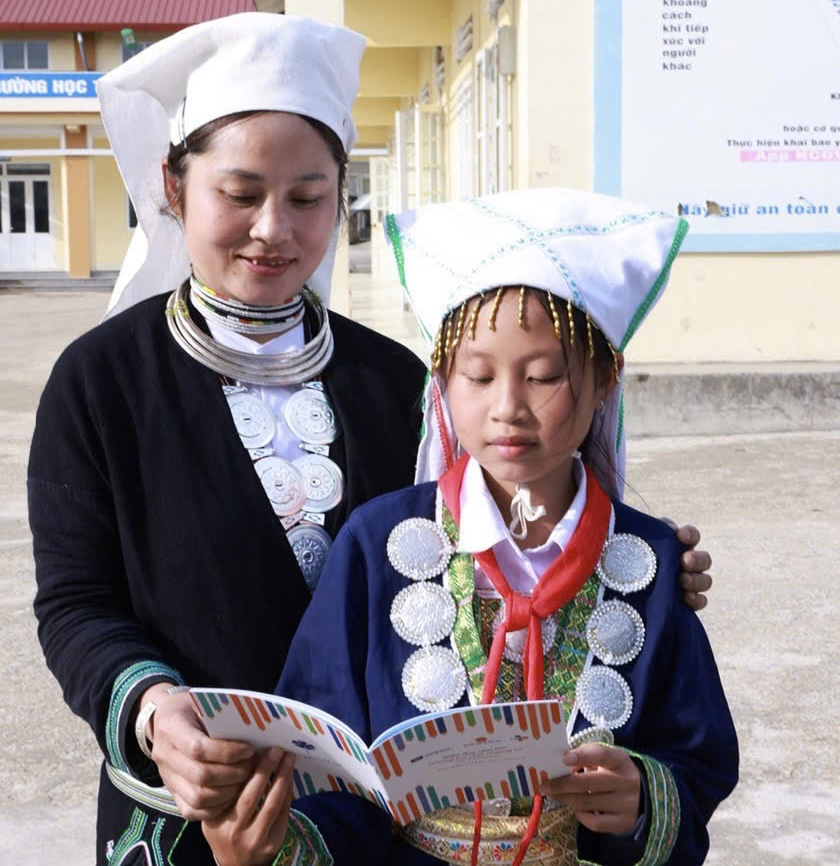
The Dao ethnic group has two groups: Red Dao and Tien Dao. The Red Dao mainly use two main colors, black and red, with two red flower strings attached to the women's shirts. The decorative patterns on the Red Dao's costumes are very unique and rich, showing images of nature close to their daily lives, such as flowers, leaves, plants, animals, and beliefs. In addition to the diverse patterns, women's costumes are also decorated with eight-petal silver flowers attached to the front and back of the shirt. The colorful costumes, rich in patterns, diverse, unique, bear the mark of the ethnic group's own cultural identity. Different from other ethnic groups, the main colors of the Tien Dao costumes are indigo and white, along with diverse decorative motifs. In addition to the main details on the costume, Dao Tien women also create highlights with silver jewelry, such as necklaces, bracelets, buttons... The most unique and distinctive feature of Dao Tien costumes is the decorative motifs based on the combination of beeswax printing art. It can be said that Dao Tien costumes are a work of art rich in aesthetic value and contain many unique cultural values.
The Lo Lo people in Cao Bang belong to the Black Lo Lo group, living mainly in two districts: Bao Lac and Bao Lam. The Black Lo Lo people's costumes are mainly black with headscarves, shirts, pants, betel bags, necklaces, leggings, and headdresses. Women often wear short, indigo shirts; two narrow sleeves connecting from the shoulder blades to the wrists with green, red, purple, and yellow fabric circles (usually nine different colored circles). The two front flaps of the shirt are decorated with a red floral fabric frill, fabric buttons, or round copper buttons, the sleeves are decorated with patterns in the way of patching fabric with colored fabric circles; the back of the shirt is patched with triangular colored fabric pieces to form squares with decorative patterns of sawtooth patterns like rice flowers, water waves, and spider webs; the hem of the shirt is decorated with red floral frills. They wear wide-leg pants, the outside of the pants is draped with a piece of fabric from the back to the front and rolled tightly in front of the belly, creating a more beautiful woman's figure. The belt is quite elaborately decorated, the front is decorated with many coins and keys made of aluminum, behind is a betel bag covered with a small green cloth.
The traditional ethnic costumes of the San Chi people are created by skillful hands. Women wear indigo shirts that are longer than the knee, with two panels, the front flap is pulled up to form a slanted flap, and the edges of the shirt are bordered with red fabric. The collar and belt are decorated with coins and eight-petaled silver flowers. The head wears a square indigo scarf with a red fabric border or the hair is wrapped inside with three-leaf clips, pinned with hairpins and accompanied by accessories such as silver necklaces and bracelets. Men's costumes are quite simple but exude a strong beauty, with indigo shirts that are sewn slightly loose, have two pockets; long pants, elastic waistband, wide pant legs.
Traditional national costumes are gradually fading away.
Due to the impact of the market mechanism, society is increasingly developing, but the worrying reality is that some traditional cultural features as well as costumes and decorative art patterns on ethnic costumes The traditions of ethnic minorities in the province are facing the risk of fading away. In the past, ethnic minorities often used traditional ethnic costumes in daily life and community activities. Currently, in many villages, ethnic minorities no longer regularly use traditional ethnic costumes in daily life, during holidays, New Year, weddings and production work, but only use traditional ethnic costumes in holidays, events, exchanges, and performances on stage. The main users of traditional ethnic costumes are women aged 40, 50 and older; many ethnic minority youth are still shy and lack confidence when wearing their costumes in front of crowds, especially those who study in urban areas. Or they will use costumes bought at the market that have been innovated because there are many beautiful, compact designs, cheap prices, light, airy materials, convenient for daily life.
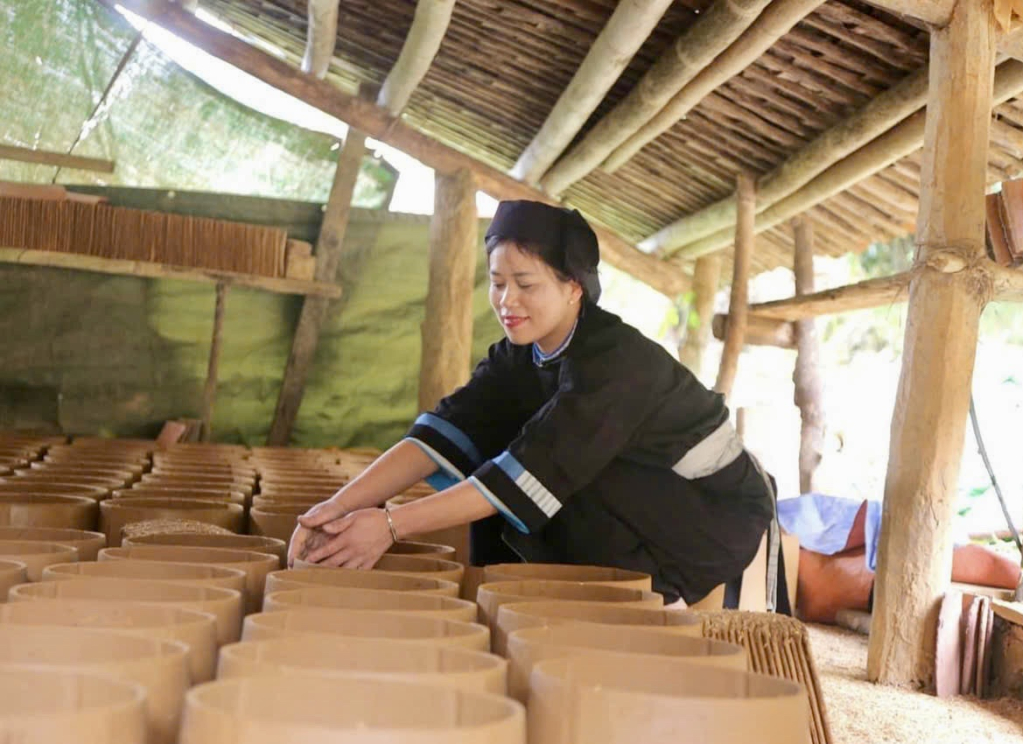
Besides, cutting, sewing, embroidering decorative patterns on costumes is still maintained, but the number of people who know how to do it and are passionate about the profession is also small, mostly elderly. Young people today rarely practice and are not interested in the art of decorating traditional ethnic costumes of the nation. In addition, the profession of growing cotton, weaving, indigo dyeing, and colored thread dyeing is no longer maintained as before, the materials to make costumes have been replaced by materials available on the market; silver jewelry decorating costumes is replaced by other metals such as aluminum, silver plating, copper...
Ethnic costumes are products of history, created by the living needs of workers in the space, cultural environment adapting to natural and social conditions through each period. Due to objective and subjective conditions of ethnic groups and regions, ethnic minority costumes in general, although some parts have been improved, are still few and slow in the direction of fashion , tending to not be respected in daily life; a part is at risk of being forgotten, completely lost in modern life.
The main reason for this situation is that there are too many external factors that have changed the tastes and needs of the majority of people to use traditional costumes. And in today's modern society, the old customs and beauty concepts are not strong enough to stand firm against the interference of many foreign cultures imported from outside. This causes tastes to change, and the concept of beauty also changes.
Need to preserve and promote the value of national costumes
Each traditional national costume not only bears historical significance but also represents the artistic values, beliefs and noble aspirations of each nation. In order to make traditional ethnic costumes more popular in the lives of ethnic minorities, to raise pride, awareness, responsibility, preserve and promote traditional ethnic costumes of ethnic groups in the area, on November 4, 2020, the Provincial People's Committee issued Plan No. 2712/KH-UBND on implementing the Project "Preserving and promoting traditional costumes of ethnic minorities in Vietnam in the current period" in the province, period 2020 - 2030. Recently, the authorities have conducted inventories and field investigations in the locality, inventorying the current status of traditional costumes of the Tay, Nung, Mong, Dao, Lo Lo, San Chi ethnic groups in the whole province to research, collect information and documents, and learn about traditional costume culture.
Based on the results of the inventory, propose solutions to preserve and promote traditional costumes of ethnic minorities; select and establish scientific records of intangible cultural heritage related to typical traditional costumes of the province to propose to include in the list of national intangible cultural heritage. Building a database of traditional ethnic costumes is a solution to serve the work of preserving, researching and promoting the value of traditional costumes. In addition, the province strengthens propaganda work, raising awareness for ethnic minorities to see the unique cultural value of traditional ethnic costumes, national pride on mass media, social networks, visual propaganda, integrated through publications, books, films, photo exhibitions or promotional clips to introduce the tourism potential of the locality. Pay special attention to the young generation, organize ethnic minority students to wear traditional costumes at ethnic boarding schools, semi-boarding schools 2 sessions/week and on holidays, festivals; encourage students at all levels in the province to wear traditional costumes on holidays, festivals and extracurricular activities of the school.
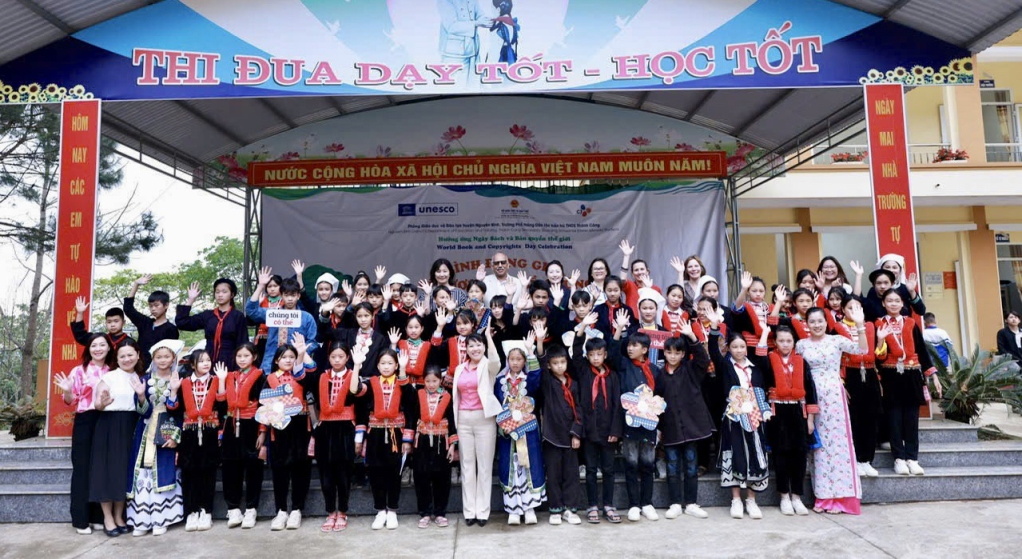
Teacher Ha Van Cong, a teacher at Thanh Cong Ethnic Boarding Secondary School (Nguyen Binh) said: The school has 198 students, most of whom are ethnic minority children. The school always encourages students to have at least one traditional costume of their ethnic group, to wear ethnic costumes every Monday, on holidays, and on important events of the school and the locality. This activity has contributed to raising students' awareness and love for ethnic costumes, their homeland, and their country, motivating them to study well, practice well, and contribute to building their revolutionary homeland.
At the Mong ethnic festival in Quang Hoa district, Trung Khanh, Mr. Hoang Van Quyet, Cao Chuong commune (Trung Khanh) said: During the festival, boys and girls have the opportunity to wear the most beautiful and colorful costumes of their ethnic group; to be immersed in the songs, dances, panpipes, flutes... I myself feel more and more love for my homeland, my country and deep gratitude to the Party, the State and beloved Uncle Ho. The festival has brought great spiritual values, spread positive messages, honored the strength of great national unity; is an opportunity for Mong ethnic people to meet, exchange, share experiences in preserving and promoting the good values of traditional national culture.
Ms. Xuan Quynh (City), designs and produces souvenir products from traditional costumes of ethnic minorities to introduce and sell to tourists, chosen by many individuals and businesses to start a business, she shared: With the desire to bring traditional culture, especially traditional costumes of ethnic minorities in the province closer to domestic and international friends; help people have more income, improve their lives, and preserve and conserve the traditional brocade weaving profession, the project "Colors of brocade of the mountainous region", she was honored to win the encouragement prize of the first "Provincial Innovative Startup Competition 2024" - Source of creativity - Aspiration for the country, was assessed to have cultural preservation value awarded by MEVI Joint Stock Company for Supporting Impact-Creating Business Initiatives. The project is increasingly expanding, enriching products, not only doll models but also many more products such as brocade handbags, brocade scarves, brocade hanging paintings...
The synchronous implementation of the above solutions aims to preserve and promote traditional costumes of ethnic minorities in the province to meet the requirement of "cultural heritage is both a driving force and a goal", contributing to the sustainable development of the culture of ethnic minorities in Vietnam, building an advanced culture imbued with national identity in the revolutionary homeland of Cao Bang.
Traditional ethnic costumes are the character and soul of each ethnic group, the unique features that distinguish one ethnic group from another. Traditional costumes of Cao Bang ethnic groups not only carry strong cultural identity but also contain artistic and historical values, and are messages from the past left for the present and the future.
Nguyen Thi Oanh
Source: https://baocaobang.vn/trang-phuc-truyen-thong-net-dac-trung-van-hoa-cua-que-huong-cao-bang-3173871.html



![[Photo] General Secretary To Lam visits Kieng Sang Kindergarten and the classroom named after Uncle Ho](https://vphoto.vietnam.vn/thumb/1200x675/vietnam/resource/IMAGE/2025/10/09/1760023999336_vna-potal-tong-bi-thu-to-lam-tham-truong-mau-giao-kieng-sang-va-lop-hoc-mang-ten-bac-ho-8328675-277-jpg.webp)

![[Photo] President Luong Cuong attends the 80th Anniversary of the Traditional Day of Vietnamese Lawyers](https://vphoto.vietnam.vn/thumb/1200x675/vietnam/resource/IMAGE/2025/10/09/1760026998213_ndo_br_1-jpg.webp)
![[Photo] Prime Minister Pham Minh Chinh chairs a meeting of the Government Standing Committee on overcoming the consequences of natural disasters after storm No. 11](https://vphoto.vietnam.vn/thumb/1200x675/vietnam/resource/IMAGE/2025/10/09/1759997894015_dsc-0591-jpg.webp)

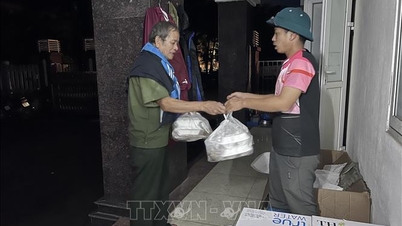

















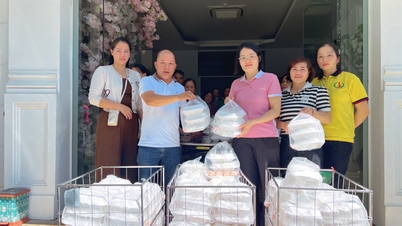






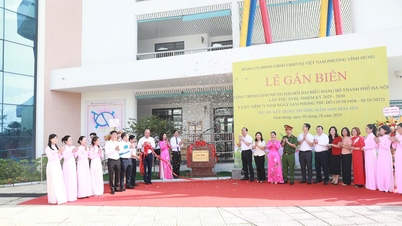

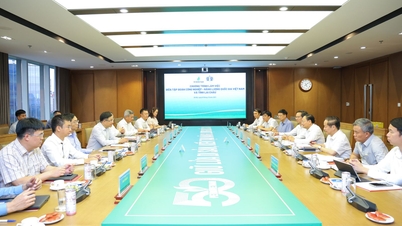



















































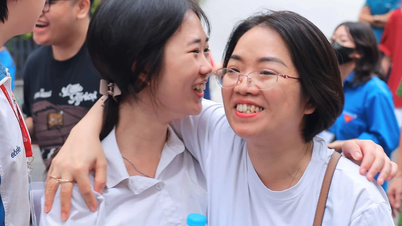

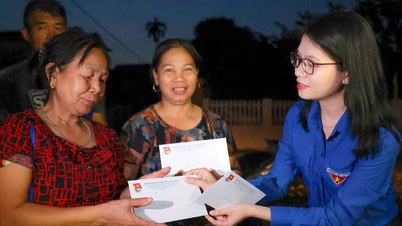












Comment (0)